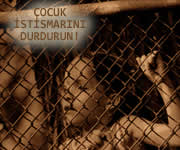Before the Portuguese occupation, Tetum became widespread through Central and Eastern Timor as pidgin under the aegis of the Belunese speaking Kingdom of Wehali. When they arrived, the Portuguese built their settlements mostly in the west, where Dawan was spoken. As the capital was moved from Lifau to Dili, Tetum became an inter-regional language within the colony. These conditions brought Timor to a significant place amongst the colonies of Portugal. For only a few Portuguese colonies conserved a local language which is not a form of Portuguese as the lingua franca (later on, the language was immensely influenced by Portuguese).

With the hasty occupation of East Timor, which couldn't have relished its independence declared in 1975, by Indonesia and the declaration of the country as "the Republic's 27th Province", Portuguese was banned and Indonesian became the only official language. Yet, the Roman Catholic Church adopted Tetum as its liturgical language.
Tetum has four dialects. The first one, Tetun-Dili, which is also known as Tetun-Prasa (City Tetum) is spoken in Dili, the capital city, and in the north of the country. The second dialect, Tetun-Terik, is spoken in the southern and southwestern coastal regions. Tetun-Belu is spoken in a central strip of the island of Timor from the Ombai Strait to the Timor Sea, and is split between East Timor and West Timor -where it is considered as the regional language, "bahasa daerah" with no official status in Indonesia-. Nana'ek, which is spoken in the village of Metinaro, on the coastal road between Dili ile Manatuto, is the fourth dialect.

Tetun-Belu and Tetun-Terik are not spoken commonly and understood at all, other than the main places they are spoken. Tetun-Prasa is the form of Tetum spoken in East Timor, and it has always been the predominant lingua franca in the eastern part of the island, even when it was not an official language.
If you are interested in this language, you can find this page interesting. And, of course, the main resource for this post, Wikipedia.
...obrigada everyone! (:



0 comments:
Post a Comment